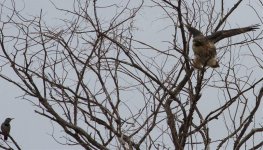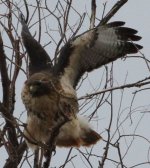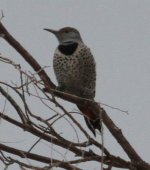Granville Leong
Well-known member
Hi Folks,
Just want to confirm that this big boy is a Red-tailed Hawk. I was in an urban park in Reno. This guy flew in and landed on a tree just 10 yards in front of me. If my guess is correct, I thought smaller birds are afraid of him and would stay clear of him. I'm very surprised that a woodworker of some sort stayed in that tree for a few minutes before he flew away. Any idea why and is that a woodpecker?
Thanks--
Granville
Just want to confirm that this big boy is a Red-tailed Hawk. I was in an urban park in Reno. This guy flew in and landed on a tree just 10 yards in front of me. If my guess is correct, I thought smaller birds are afraid of him and would stay clear of him. I'm very surprised that a woodworker of some sort stayed in that tree for a few minutes before he flew away. Any idea why and is that a woodpecker?
Thanks--
Granville







